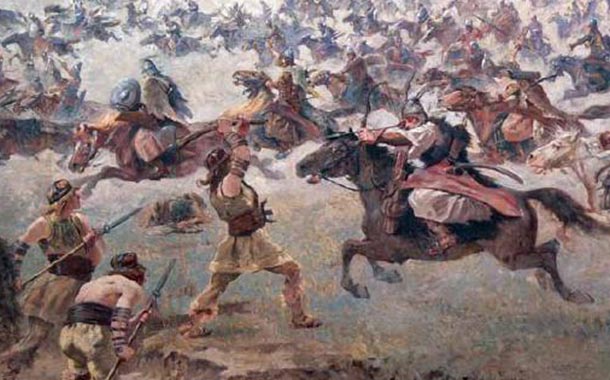<![CDATA[We in the Western world tout masculinity as being able to grow as much facial hair as possible, playing physically intense sports, and having huge bulging muscles like Arnold Schwarzenegger in his prime. According to a scientist from the University of Oslo's doctoral dissertation however, men in Scandinavia were masculine in a whole different sense - in fact, they would seem slightly feminine by today's standards. Archaeologist Lisbeth Skogstrand came to her conclusions by studying the graves of men during an "unwritten" time in Scandinavian history, a period spanning 1,500 years from 1100 BC to 400 AD. She used over 800 items from graves in Norway and Denmark, including 197 cremation graves in the east of Norway. Throughout history and even today, being a warrior was the epitome of masculinity. In her study, Skogstrand alludes to a time in history, particularly in the Roman period, when men were buried with weapons such as shields, spears and swords. She states this was seen a lot in Oppland, Buskerud and Hedmark, but was not as much in Ostfold, which is a county southeast of Oslo. In contrast to the items found in men's graves, the items found in women's graves tend to include scissors, knives and spindles. This suggests that men were expected to master the use of weapons, while females were expected to master household work. Her study was divided into three periods: The Early Bronze Age (1100-500 BC), The Early Roman Period (~200 AD), and The Later Roman Period (200-400 AD). She found striking differences between these three periods. In the Early Bronze Age, men were buried with grooming items like razors. During the early Roman Period, men were buried with their tools of combat, and in the later Roman Period, men were buried with the same things women had in their graves: tools and decorative items. These grooming tools that were buried with their owners in the Bronze and Later Roman Ages include bronze razors, tweezers, and other items that seemed to have been used for manicures. To prove that the instruments were indeed what they seem to have been, traces of beards and eyebrows have been seen on these tools. Skogstrand hopes to find more information about a blind spot that lasts about 500 years, between the Bronze Age and the Early Roman Age. Graves from this period had too few artefacts to effectively study. What can be seen in those two periods is that gender roles changed. Skogstrand believes that the ideal masculine man was not just a warrior, but a sexy warrior. Her findings are indeed striking, but some believe that the conclusions she has drawn on masculinity have no basis whatsoever. They state that graves don't tell us much about how the different cultures lived in those periods. On the other hand, there have been several other studies from other areas around the world that have made conclusions about a society based on people's graves, so Skogstrand could very well be on to something here. Her critics concede that her study raises legitimate questions, as there has been very little archaeological material excavated that provides an insight into gender roles in historical societies.]]>
Signs of Masculinity Were Different in Ancient Scandinavia
